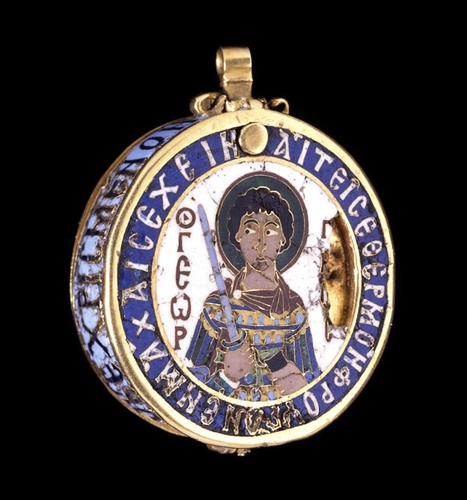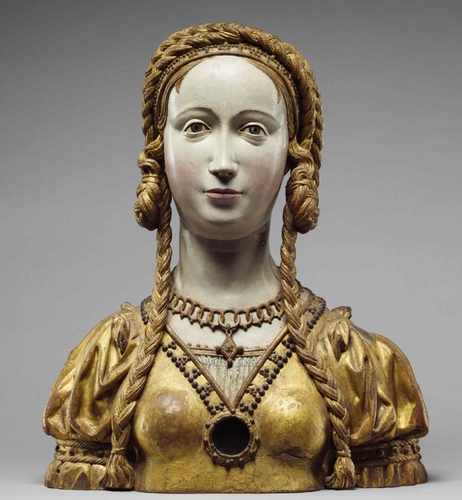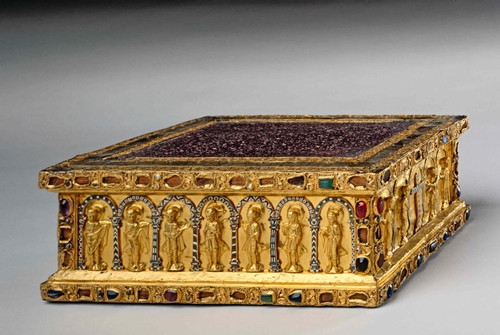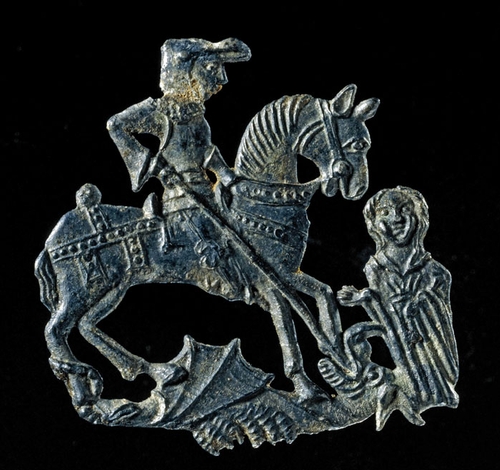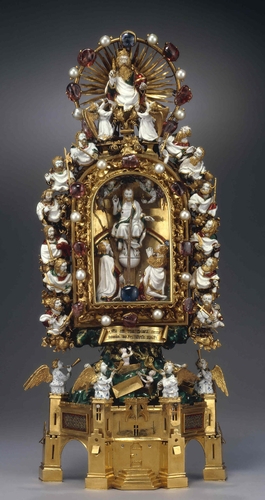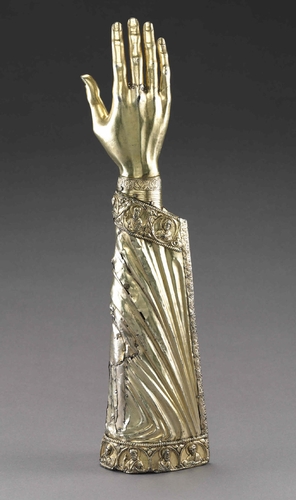In 1145 a rebuilding of Chartres Cathedral was under way. Chartres, not far from Paris, was a wealthy diocese and had a precious relic, the shift of the Virgin Mary, said to be the one she was wearing at the time of the Annunciation of the Angel Gabriel. It had been given to Charlemagne by the Byzantine emperor and then passed to Chartres by Charlemagne’s grandson. As was the custom, a mass of local donors had arrived at the cathedral with offerings, food for the workers and even stones and lime. They hoped, of course, for some reward and soon the priests brought out some relics to be passed around in the hope of cures.
But none happened. Soon there were the beginnings of a panic. Perhaps the Virgin Mary did not consider them worthy enough. Something more was needed. The word went round that all women, children included, should strip to the waist and crawl towards the high altar, calling on the priests to scourge them for their sins. “Let these ears be lashed which have listened to vanity, let these hands be smitten that have worked iniquity.” The priests beat them as requested and before long miracle cures were being reported. The Virgin Mary had relented in the face of such abject submission of the sinful.
The emergence of the Christian miracle at the core of daily life can be traced quite precisely to the period AD 380-420. As I have explored in my books AD 381 and The Closing of the Western Mind, it was then that the emperor Theodosius closed down intellectual debate, promulgated the Nicene Trinity as the only acceptable form of Christian orthodoxy, banned the pagan cults and, in effect, destroyed the traditions of rational thought that had been at the core of a classical education. The Church acquiesced in these decrees and a theological superstructure was developed to support the new authoritarianism. While for Aristotle reasoning had been the highest accomplishment of a healthy mind, for the theologian Augustine the Fall from Paradise had corrupted the once perfect mind of Adam and Eve so that they and all their successors, burdened from generation to generation with this “original sin”, were left with only a spark of reason. The space was left clear for Augustine to insist on the importance of faith and authority.
We also see in Augustine, a man educated in the pagan classical world, a drift away from his early scepticism about miracles to a complete acceptance of them by the time he was an old man in the 420s. He now demands that miracles be made public so that the glory of God can be repeatedly shown to the faithful. This new approach subverted ancient traditions and challenged the pagan natural philosophers. As a late fourth-century bishop of Brescia, Philastrius, put it: “There is a certain heresy concerning earthquakes, that they come not from God’s command, but, it is thought, from the very nature of the elements. Paying no attention to God’s power, the heretics presume to attribute the motions of force to the elements of nature like certain foolish philosophers, who, ascribing this to nature, know not the power of God.” An age of miracles had begun
In short, the medieval God was not some abstract supreme being, some philosophical entity that floated above the workings of the natural world as most classical philosophers had believed, but one who was actively involved in it. As the theologians argued, God could do anything he willed short of ordering a contradiction. To his credit he was enormously busy. If one adds up the miracles recorded in the surviving Libri Miraculorum kept by many monasteries and churches, they easily run into the hundreds of thousands. As Philastrius had noted, there was little point in the philosophers explaining that there were natural causes for earthquakes when they were so clearly the action of God.
Yet relics were more than simply a medium through which miracles could be sought. Everything associated with Christ, his Passion and his Resurrection had sacred value in itself. The Cross had apparently been rediscovered by Helena, the mother of the emperor Constantine I, in Jerusalem in the 320s and splinters of it had spread throughout Christian Europe, many of them in wonderful gold reliquaries in the shape of a cross. By 1200 virtually every object associated with the Passion was to be found somewhere or other. One of the greatest coups was the acquisition of the Crown of Thorns by the pious French king Louis IX in 1239. It cost him half an entire year’s income and he spent another vast sum building the sumptuously Gothic Saint-Chapelle in Paris to house it and other relics, including some of the Virgin Mary’s milk.
Of course, most relics had hardly this prestige – they were the bodies of ordinary saints and martyrs. Yet these benefited from an early Christian belief that the mortal, decaying flesh we all have could be transformed into the spiritual form that Adam and Eve had enjoyed before their Fall and that Christ had shown at the Resurrection. So the early accounts of martyrs, for instance, show that at the moment of their deaths their bodies become glorified. When the martyr Polycarp was being burned (in about 155), “the fire took the shape of a vaulted room, like a ship’s sail filled with the wind, and made a wall round the martyr’s body, which was in the middle not like burning flesh but like gold and silver refined in a furnace.” While the martyr’s body was transformed at his or her death, it was also possible to work towards a spiritual body on earth through extreme abstinence. The sign of true sainthood was that the body did not corrupt at death and, however this was achieved, the “uncorrupted” bodies of saints still lie under altars throughout Catholic Europe. Just as Jesus had appeared in a living body at the Resurrection, so too could saints’ bodies show continuing signs of life. When the tomb of Francis of Assisi was opened in 1449 “the eyes were open as if of a living man, and moderately lifted up to heaven. The stigmata [the wounds of Christ that had appeared on his body] were still bleeding.” Other bodies sat up as the Eucharist or a cross passed. When two arms from St Nicholas of Tolentino’s long-dead body were stolen by German pilgrims, a trail of fresh blood led to their recapture.
For the rest of humanity, those who had not suffered martyrdom or endured the extreme asceticism needed to transform the flesh before death, there was less hope. All knew that they were guilty of original sin that had corrupted their flesh and reason. Innocent III, in a best-selling treatise, On The Contempt of the Worlds, that he had written before becoming pope in 1198, gave a vision of man “as formed of dust, clay and ashes and, a thing far more vile, of the filthy sperm ... His evil doings offend God, offend his neighbour, offend himself ... Accordingly he is destined to become the fuel of the everlasting, eternally painful hellfire.” While the Catholic Church mitigated this through the creation of the idea of a Purgatory, where suffering would be nasty but temporary, the fear of eternal hellfire pervaded the minds of medieval Christians. The west wall of most churches held a Doom, a vivid depiction of the judgements to come with the sufferings of those damned shown in meticulous detail.
This gave another dimension to the shrines. The transformed bodies represented saints and martyrs who were certainly in heaven and so able to intercede directly with God for the sinner. Louis IX put it well. Just as respected courtiers could approach a just king sure of a ready audience, “it is the same with the saints in Paradise who, being friends of Our Lord, and his intimates, can invoke him in all confidence, since he cannot fail to listen to them.” Naturally enough, some saints had greater power than others. The most serious sinners were sent off to the great Spanish shrine of Santiago di Compostela, where the apostle James, whose body had arrived in Spain on a rudderless ship, might prove an effective intercessor. The most effective intercessor of all was the Mother of God herself, the Virgin Mary, and it was hardly surprising that her shrines became so common and so popular in later medieval Europe. One of the most extraordinary images to survive from the Middle Ages is the Virgin with her cloak sheltering her people from a plague sent through arrows fired from heaven by her own son, or God the Father.
Of course, money poured into the shrines. Offerings were expected, especially if a favour had been granted. Many gave gems and gold towards the reliquaries themselves, which were fashioned by the finest goldsmiths and jewellers of the age. Many will be on display in the exhibition “Treasures of Heaven” that the British Museum is holding this summer. However their glittering opulence risks concealing the anguish that was poured out at the shrines as those desperate for salvation pleaded with their favourite saint to intercede with God for them. In Rome, the most prestigious relic was the Vera Iconica, a cloth on which the face of Christ had been transferred when it was wiped on the road to Calvary. It was not often exposed, but an account of 1471 tells how the assembled crowds greeted it with howls of repentance. “They beat themselves repeatedly, causing themselves great pain, for they felt that by their sins, they had inflicted on Christ those wounds whose marks they saw before them: and now they hoped to wash away their guilt with tears, to purge the stains of sin with groans of pain.”
Life in the Middle Ages was harsh enough. The idea of original sin as elaborated by Augustine, the belief that only the grace of God could save any single human from the deserved punishment of eternal hellfire, had no rational basis. It has to be searched for within his own pessimistic psychology. Christian relics would always have been venerated, as those of other religious traditions have been, but it was Augustine that burdened them with such responsibility. It was unhealthy not least because the dependence on the capriciousness of God and his endless apparent miracles froze the possibilities of scientific advance. One cannot define natural laws if they stand under constant threat of being subverted. It was only in Christian contexts where miracles were not ubiquitous that science was possible and this explains the very different futures of northern Protestant Europe and the Catholic south, which reaffirmed the miraculous at the Counter-Reformation.
Charles Freeman's Holy Bones, Holy Dust: How Relics Shaped the History of Medieval Europe is published Yale University Press. Treasures of Heaven: saints, relics and devotion in medieval Europe is at the British Museum from 23 June until 9 October 2011.
All images courtesy British Museum © The Trustees of the British Museum / The Cleveland Museum of Art / The Metropolitan Museum of Art / Art Resource, NY
